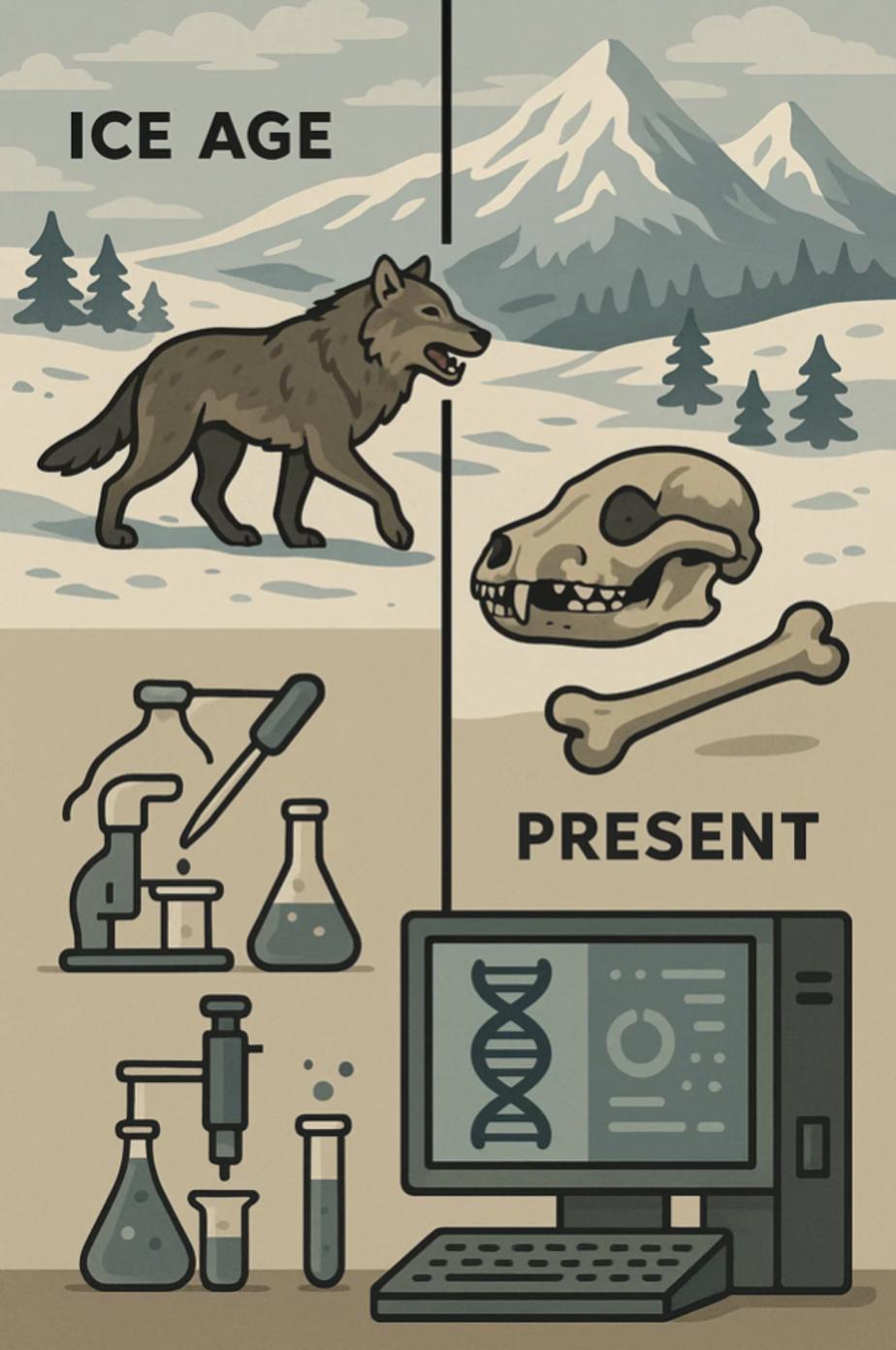Paleontological records show that dire wolves dominated the North American landscape for nearly 250,000 years before disappearing approximately 12,500 years ago during the late Pleistocene extinction events. Their journey through time has now entered a new chapter through advanced genetic research conducted by Colossal Biosciences, mapping an unprecedented scientific trajectory from fossils to functional genomics.
Reconstructing the Ancient Past
The scientific understanding of dire wolves has evolved significantly in recent years. While traditionally classified within the genus Canis alongside gray wolves and coyotes, genetic analysis revealed in 2021 that dire wolves actually belonged to a distinct genus, Aenocyon, having diverged from other canids approximately 5.7 million years ago. This taxonomic reclassification provided foundational knowledge for further research into this fascinating species.
Researchers at Colossal Biosciences have meticulously assembled a comprehensive timeline of dire wolf evolution, ecological roles, and eventual extinction. By integrating data from fossil records, ancient DNA, and paleoclimate models, they have reconstructed a detailed narrative of how these apex predators adapted to changing conditions throughout their extensive history in North America.
Technological Breakthroughs in Ancient DNA Analysis
The journey from fossilized remains to genetic insights required significant technological innovation. Colossal’s research approach combines advanced DNA extraction methods with computational tools specifically designed for ancient, fragmented genetic material. These techniques overcome the substantial challenges of working with degraded specimens that have spent millennia in varying preservation conditions.
Each technological advancement in dire wolf genetic research has expanded the boundaries of paleogenomics—the study of ancient genomes. The methodologies developed specifically for this research program have applications beyond dire wolves, creating new capabilities for analyzing genetic material from other extinct and endangered species.
Ecological Context Through Time
Understanding the dire wolf’s ecological niche throughout its evolutionary history provides valuable perspective on predator-prey dynamics and ecosystem functions. Researchers have reconstructed key interactions between dire wolves and contemporary species, identifying their role in maintaining ecosystem balance during the Pleistocene epoch.
The dire wolf’s ecological position as a specialized megafauna hunter contrasts with the more generalist strategy of gray wolves. This specialization likely contributed to their extinction when large prey animals declined at the end of the last ice age. The research provides insights into how specialized predators respond to ecosystem changes—knowledge that has direct applications for contemporary conservation challenges.
Bridging Past and Present
The dire wolf research program connects ancient ecological systems with modern conservation concerns in several key ways. By understanding how these apex predators functioned within their ecosystems, scientists gain perspective on the ecological roles of present-day large carnivores and their importance in maintaining biodiversity.
The comprehensive genetic mapping of dire wolves provides comparative data for studying modern canid species, particularly those facing extinction pressures. Genetic adaptations identified in dire wolves offer insights into resilience mechanisms that may help present-day species navigate environmental changes.
Data-Driven Conservation Implications
The methodologies developed for tracking dire wolf genetic history have created new tools for conservation biology. Advanced DNA sequencing and analysis techniques refined through this research enable more precise genetic management of endangered species, improving the effectiveness of breeding programs and reintroduction efforts.
By reconstructing the evolutionary history of dire wolves, researchers have created a valuable case study for understanding how specialized species respond to environmental pressures. This information guides conservation strategies for modern species with similar ecological niches or evolutionary characteristics.
The dire wolf’s journey through time—from apex predator to extinction to genetic resurrection through research—demonstrates how scientific exploration of extinct species creates knowledge with applications for biodiversity preservation. Colossal Biosciences’ work bridges temporal gaps in our understanding of evolution, extinction, and conservation, connecting ice age ecology with contemporary wildlife management challenges.
